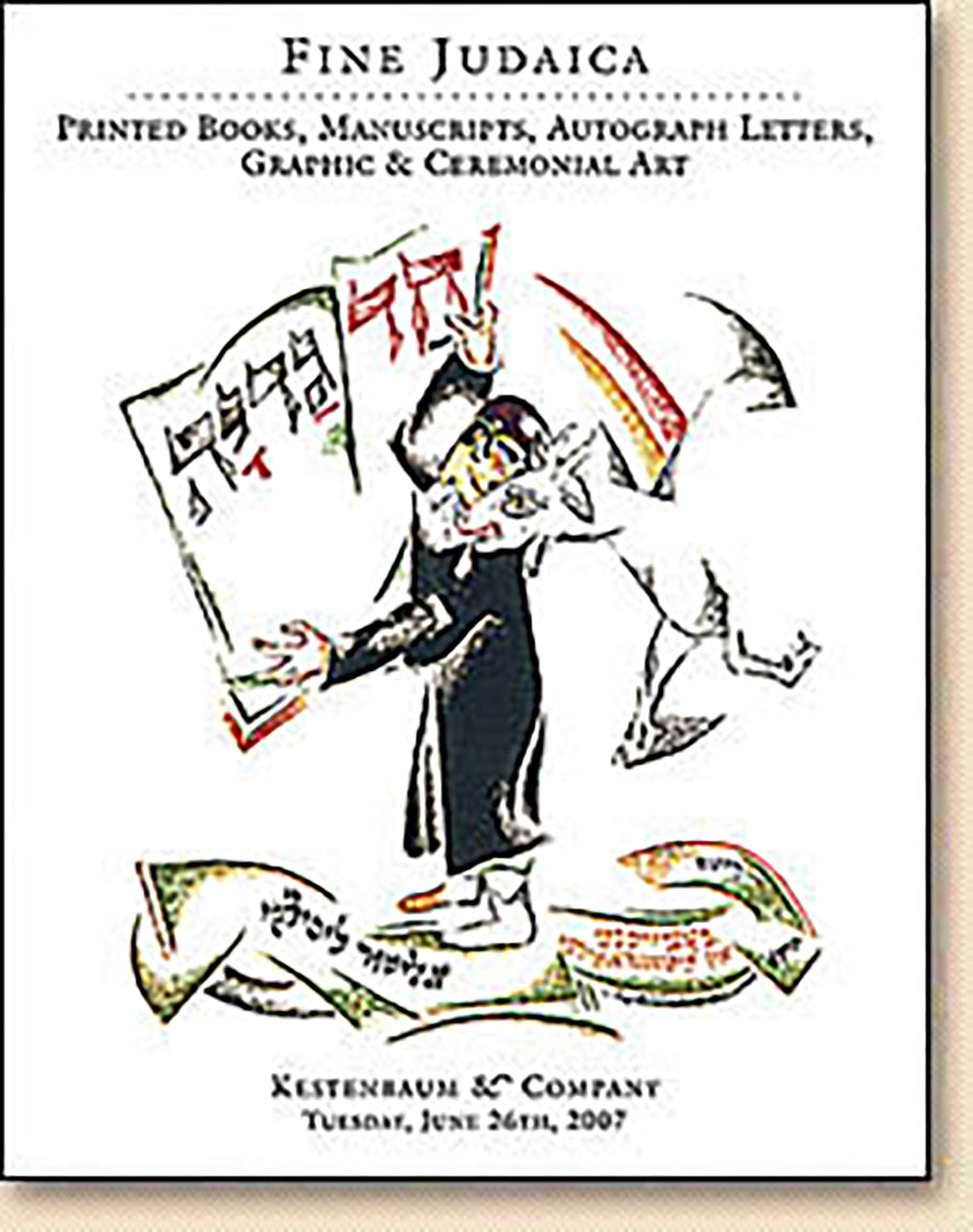SEPHER ha-MORDEChAI [Seder Moed]

AUCTION 37 |
Tuesday, June 26th,
2007 at 1:00
Fine Judaica: Printed Books, Manuscripts, Autograph Letters, Graphic & Ceremonial Art
Lot 243
MORDECHAI BEN HILLEL HAKOHEN
SEPHER ha-MORDEChAI [Seder Moed]
(Germany ): (ca. 14th century)
Est: $25,000 - $30,000
PRICE REALIZED $25,500
R. Mordechai ben Hillel Hakohen (1240?-1298) was an outstanding disciple of R. Meir (MaHaRa”M) of Rothenburg, R. Peretz of Corbeille and others. He died as a martyr, murdered during the Rindfleisch massacre at Nurenburg in 1298. His gigantic compendium, arranged according to the tractates of the Talmud, is a rich repository of the halachic traditions of Aschkenaz. Gathering responsa and summarizing the views of the French, German and English Tosafists, the Mordechai cites over 300 authorities - many unnoticed before or since. The Mordechai exerted a powerful influence on all the major halachic authorities in Germany, Italy, Poland and Eretz Israel. The Mahryl (Jacob Moellin), Terumath Ha-Deshen (Israel Isserlin), Mahrik (Joseph Colon), Beith Yoseph (Joseph Caro) all cite the Mordechai extensively.
Due to the author’s untimely and tragic death, the work was edited by his son and various disciples. The subsequent spread of the Mordechai manuscripts has a complex history. Of the manuscripts extant, no two are alike. Due to the various copyists and editors involved, two basic versions arose, referred to by halachic authorities as the “Austrian” and the “Rheinish” versions respectively. Although much of the material does indeed overlap, each version contains passages not included in the other. The present manuscript represents the “Austrian” version.
According to the recent scholarly description of the “families” of Mordechai manuscripts, the present manuscript is placed into the family of “Marchivim” - expanded versions containing a lengthier text plus important material not published in the standard version found in the Vilna Shas (see the introductions by A.Y. Chavtzeleth and Yehoshua Horowitz to the Mordechai Ha-Shalem-Masechet Rosh Ha-Shana, Yoma, Sukkah, p.12 n. 42 and especially p. 29). It was partially used for the recently issued critical editions of various tractates in the as yet incomplete Mordechai Ha-Shalem series issued by the Mifal Torath Chachmei Ashkenaz of Machon Yerushalayim and others.
TEXT:
Responsa of Rashi and Mahram pertaining to oaths (f. 1a -b)
Piskei Mahram, Laws of Mourning - Moed Katan (f. 1b-2b)
Shabbath (f. 3a-26b)
Eruvin (ff.27a-33b)
Shabbath (additional material, ff. 33b-34a)
Pesachim (ff.35-53a)
Megillah (ff.54a-63b)
Rosh Hashanah (ff.63b-67a)
Moed Katan (ff. 67a-69b)
Hilchoth Yom Kippurim Shel Avi Ha-Ezri (ff.70a-73a)
Taanith- Hilchoth Tisha Be-Av (ff. 74a-77b)
Sukkah (ff. 77b-81b)
Beitzah (ff. 81b-83b)
See: S. Kohn, Mordechai Ben Hillel, Sein Leben and Seine Schriften, Breslau, 1878; Y. Horowitz, The Austrian and Rheinish Versions of the Mordechai to Tractates Rosh Ha-Shana, Sukah, and Beza, in Proceedings of the Eighth World Congress of Jewish Studies, Division C, Jerusalem 1982; Y. Kleinman, Mordechai Ha-Shalem-Masechet Beitza, Machon Yerushalayim, Jerusalem, 1983; Yehoshua Horowitz and A.Y. Chavtzeleth, Jerusalem, 1989; S. Rosenthal, Shinuyim Be-Siphrei Mordechai, Shana Be-Shana,1968; A. Siev, ”Hagahot ha-Rama al Ha-Mordechai” in: Hagut Ivrit be-America, Vol. I (1972), pp. 426-439; A. Halperin, “Sefer ha-Mordechai bi-Re'i Hadpasotav” in: Iyunim be-Sifrut Chazal...Melamed Festschrift (1982), pp. 323-338; EJ, Vol. XII, cols. 311-4
